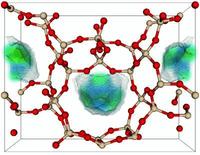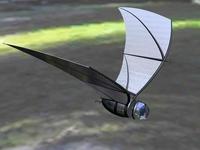-
Tech firm creates software pairing response systems with open data
A new application, called Disaster Assessment and Assistance Dashboard (DAAD), harnesses emergency response data in real-time and across multiple departments and agencies. DAAD will function as a central hub for information in the event of a disaster — using more than 100 different interfaces that upload data. Additionally, the hub will work in accordance with all manner of local government organizations such as fire stations, police stations and hospitals to further create a larger picture during the actual moments of an emergency.
-
-
Encouraging innovation for better preparedness, recovery, and resilience tools
Last week the White House hosted innovators in technology and emergency management to discuss new tools that can improve preparedness, recovery, and resilience in the wake of a disaster. The White House Innovation for Disaster Response and Recovery Initiative Demo Dayshowcased innovations from the private sector and government agencies aimed at aiding survivors of large-scale emergencies. The key goal was to “find the most efficient and effective ways to empower survivors to help themselves,” said U.S. Chief Technology Officer Todd Park.
-
-
Tiny laser sensor increases bomb detection sensitivity
New technology under development could soon give bomb-sniffing dogs some serious competition. A team of researchers has found a way dramatically to increase the sensitivity of a light-based plasmon sensor to detect incredibly minute concentrations of explosives. The researchers noted that the sensor could potentially be used to sniff out a hard-to-detect explosive popular among terrorists. The sensor also could be developed into an alarm for unexploded land mines that otherwise are difficult to detect, the researchers said.
-
-
FBI: driverless cars could be used as bombs-on-wheels

Whether or not a driverless car, from Google or any other company, ever makes it to market, the FBI thinks it may be a “game changing” vehicle which could dramatically change high-speed car chases so that the pursued vehicle would have an advantage over the pursuing car. An agency report also warned that such cars may be used as “lethal weapons.”
-
-
A drone finds natural disaster survivors through their cell-phones
During his semester project in Computer Science at the École polytechnique fédérale de Lausanne (EPFL), Jonathan Cheseaux developed a system for locating a person via his or her mobile phone with a drone. This device could be used to find victims in natural disasters.
-
-
“Smart” rocks detect bridge damage
It is hard to gauge how structurally sound a bridge is when its foundation is buried in a riverbed deep below the water’s surface. New “smart” rocks which are being developed by researchers will give engineers an accurate, easy and cost-effective tool to monitor a bridge’s foundation, in real time. The leading cause of bridge collapse in the United States is scour, an erosion process where water flow carries away river bed deposits and creates scour holes around the bridge pier or abutment. Smart rocks placed at the base of bridge foundations are designed to roll to the deepest point of a scour hole and act as field agents to relay scour depths.
-
-
Sandia Labs-developed IED detector being transferred to the U.S. Army
Though IED detonations have declined in Afghanistan since a peak of more than 2,000 in the month of June 2012, Department of Defense reports indicated IEDs accounted for about 60 percent of U.S. casualties that year. Detecting improvised explosive devices in Afghanistan requires constant, intensive monitoring using rugged equipment. When Sandia researchers first demonstrated a modified miniature synthetic aperture radar (MiniSAR) system to do just that, some experts did not believe it. Those early doubts, however, are gone. Sandia’s Copperhead — a highly modified MiniSAR system mounted on unmanned aerial vehicles (UAVs) — has been uncovering IEDs in Afghanistan and Iraq since 2009. Now, Sandia is transferring the technology to the U.S. Army to support combat military personnel.
-
-
A new way to detect leaks in pipes
Explosions caused by leaking gas pipes under city streets have frequently made headlines in recent years, including one that leveled an apartment building in New York this spring. But while the problem of old and failing pipes has garnered much attention, methods for addressing such failing infrastructure have lagged far behind. Typically, leaks are found using aboveground acoustic sensors, which listen for faint sounds and vibrations caused by leakage, or in-pipe detectors, which sometimes use video cameras to look for signs of pipe breaks. But all such systems are very slow, and can miss small leaks altogether. Self-propelled robotic device can speed through pipes, pinpointing leaks more accurately than existing methods.
-
-
Technology allows human to climb like geckos
Historically, gaining the high ground has always been an operational advantage for soldiers, but the climbing instruments on which they are frequently forced to rely — tools such as ropes and ladders — have not advanced significantly for millennia. DARPA’s Z-Man program has demonstrated the first known human climbing of a glass wall using climbing devices inspired by geckos. The historic ascent involved a 218-pound climber ascending and descending twenty-five feet of glass, while also carrying an additional 50-pound load in one trial, with no climbing equipment other than a pair of hand-held, gecko-inspired paddles.
-
-
Smart coating could make oil-spill cleanup faster and more efficient
In the wake of recent off-shore oil spills, and with the growing popularity of “fracking” — in which water is used to release oil and gas from shale – there is a need for easy, quick ways to separate oil and water. Now, scientists have developed coatings that can do just that.
-
-
Laser weapon developed for Marine vehicles

As the U.S. Navy prepares to deploy its first laser weapon on a ship later this summer, Office of Naval Research (ONR) officials announced that they have finished awarding contracts to develop a similar weapon to be used on ground vehicles. The Ground-Based Air Defense Directed Energy On-the-Move program, commonly referred to as GBAD, aims to provide an affordable alternative to traditional firepower to keep enemy unmanned aerial vehicles (UAVs) from tracking and targeting Marines on the ground.
-
-
New material captures CO2 at natural gas wellheads

Natural gas is the cleanest fossil fuel. Development of cost-effective means to separate carbon dioxide during the production process will improve this advantage over other fossil fuels and enable the economic production of gas resources with higher carbon dioxide content that would be too costly to recover using current carbon capture technologies. Rice University chemists invented a porous material which sequesters carbon dioxide, a greenhouse gas, at ambient temperature with pressure provided by the wellhead, and lets it go once the pressure is released. The material shows promise to replace more costly and energy-intensive processes.
-
-
Nature-inspired designs for drones of the future

Based on the mechanisms adopted by birds, bats, insects, and snakes, fourteen research teams have developed solutions to some of the common problems that drones could be faced with when navigating through an urban environment and performing novel tasks for the benefit of society. Whether this is avoiding obstacles, picking up and delivering items, or improving the take-off and landing on tricky surfaces, it is hoped the solutions can lead to the deployment of drones in complex urban environments in a number of different ways, from military surveillance and search and rescue efforts to flying camera phones and reliable courier services.
-
-
DARPA Demo Day 2014: Preserving, expanding U.S. technological superiority
Information technology (IT) is a key enabler for the Defense Department (DoD) and has been a focus area for DARPA since its founding in 1958. DARPA’s contributions to modern IT are well-known — perhaps most notably, DARPA is generally credited with developing and prototyping the technology for what is now known as the Internet. While the DoD currently enjoys IT superiority, that superiority cannot be taken for granted. On Wednesday, DARPA held the largest-ever Pentagon event to showcases more than 100 projects aiming to be game-changing improvements to U.S. national security.
-
-
Floating solar power plants offer many benefits
Water-based solar plants are at least 50 percent more efficient than a land-based solar power system.The water on which the plant floats helps extending the life of the photovoltaic panels, meaning greater efficiency and performance from the solar panel system, and the plant also prevents nearly 90 percent of the evaporation for the surface area that it covers, an important benefit in dry climates.
-
More headlines
The long view
Autonomous Vehicle Technology Vulnerable to Road Object Spoofing and Vanishing Attacks
Researchers have demonstrated the potentially hazardous vulnerabilities associated with the technology called LiDAR, or Light Detection and Ranging, many autonomous vehicles use to navigate streets, roads and highways. The researchers have shown how to use lasers to fool LiDAR into “seeing” objects that are not present and missing those that are – deficiencies that can cause unwarranted and unsafe braking or collisions.
Tantalizing Method to Study Cyberdeterrence
By Trina West
Tantalus is unlike most war games because it is experimental instead of experiential — the immersive game differs by overlapping scientific rigor and quantitative assessment methods with the experimental sciences, and experimental war gaming provides insightful data for real-world cyberattacks.
Prototype Self-Service Screening System Unveiled
TSA and DHS S&T unveiled a prototype checkpoint technology, the self-service screening system, at Harry Reid International Airport (LAS) in Las Vegas, NV. The aim is to provide a near self-sufficient passenger screening process while enabling passengers to directly receive on-person alarm information and allow for the passenger self-resolution of those alarms.
Falling Space Debris: How High Is the Risk I'll Get Hit?
By Zulfikar Abbany, Julia Vergin, and Katja Sterzik
An International Space Station battery fell back to Earth and, luckily, splashed down harmlessly in the Atlantic. Should we have worried? Space debris reenters our atmosphere every week.
Testing Cutting-Edge Counter-Drone Technology
Drones have many positive applications, bad actors can use them for nefarious purposes. Two recent field demonstrations brought government, academia, and industry together to evaluate innovative counter-unmanned aircraft systems.
Strengthening the Grid’s ‘Backbone’ with Hydropower
By Michael Matz
Argonne-led studies investigate how hydropower could help add more clean energy to the grid, how it generates value as grids add more renewable energy, and how liner technology can improve hydropower efficiency.
The Tech Apocalypse Panic is Driven by AI Boosters, Military Tacticians, and Movies
By Matthew Guariglia
From popular films like a War Games or The Terminator to a U.S. State Department-commissioned report on the security risk of weaponized AI, there has been a tremendous amount of hand wringing and nervousness about how so-called artificial intelligence might end up destroying the world. There is one easy way to avoid a lot of this and prevent a self-inflicted doomsday: don’t give computers the capability to launch devastating weapons.
The Tech Apocalypse Panic is Driven by AI Boosters, Military Tacticians, and Movies
By Matthew Guariglia
From popular films like a War Games or The Terminator to a U.S. State Department-commissioned report on the security risk of weaponized AI, there has been a tremendous amount of hand wringing and nervousness about how so-called artificial intelligence might end up destroying the world. There is one easy way to avoid a lot of this and prevent a self-inflicted doomsday: don’t give computers the capability to launch devastating weapons.
